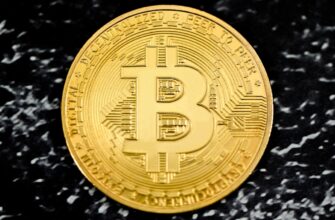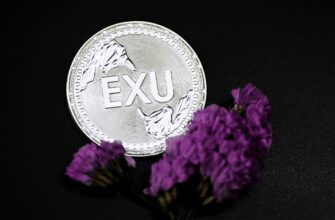In the rapidly evolving world of cryptocurrency, stablecoins like USDC and USDT have become essential tools for traders, investors, and DeFi users. Both pegged 1:1 to the US dollar, they offer stability amid crypto’s notorious volatility. But when asking “is USDC or USDT better,” the answer isn’t straightforward. This comprehensive guide examines their key differences to help you decide.
## Understanding Stablecoin Fundamentals
Stablecoins are blockchain-based digital currencies designed to maintain a consistent value by pegging to stable assets like fiat currencies. They serve critical functions:
– Providing safe havens during market turbulence
– Enabling seamless trading between cryptocurrencies
– Facilitating cross-border payments with minimal fees
– Powering decentralized finance (DeFi) lending and borrowing protocols
USDC (USD Coin) and USDT (Tether) dominate this space, collectively representing over 90% of stablecoin transactions. While they share similar purposes, their underlying structures differ significantly.
## USDC vs USDT: Critical Differences Compared
### 1. Issuance and Governance
– **USDC**: Launched in 2018 by Circle and Coinbase through the Centre Consortium. Governed by transparent regulatory compliance standards.
– **USDT**: Created in 2014 by Tether Limited. Operates with less regulatory oversight historically.
### 2. Reserve Backing & Transparency
– **USDC**: Backed entirely by cash and short-term U.S. Treasuries. Monthly attestations by top accounting firm Grant Thornton verify reserves.
– **USDT**: Reserves include commercial paper, corporate bonds, and other assets alongside cash. Quarterly attestations provided, though past controversies raised questions about full backing.
### 3. Market Position & Adoption
– **USDT**: Dominates with $110B+ market cap (as of 2023). Highest liquidity across exchanges.
– **USDC**: $26B+ market cap. Rapidly growing in DeFi ecosystems due to perceived trustworthiness.
### 4. Blockchain Compatibility
Both support Ethereum, Solana, and Polygon, but differ in niche networks:
– **USDT**: Available on 14+ chains including Tron, EOS, and Omni
– **USDC**: Supported on 15+ chains including Stellar and Hedera
## Pros and Cons Breakdown
### USD Coin (USDC) Advantages & Limitations
**Pros**:
– ✅ Regulatory-friendly with licensed issuers
– ✅ 100% cash and Treasury-backed reserves
– ✅ Real-time attestations for transparency
– ✅ Growing institutional adoption
**Cons**:
– ❌ Smaller market cap than USDT
– ❌ Limited presence on some exchanges
– ❌ Centralized minting/burning control
### Tether (USDT) Advantages & Limitations
**Pros**:
– ✅ Unmatched liquidity across trading pairs
– ✅ Broadest exchange and wallet support
– ✅ Lower transaction fees on Tron network
– ✅ Extensive multi-chain availability
**Cons**:
– ❌ Historical controversies about reserve audits
– ❌ Exposure to riskier assets in reserves
– ❌ Ongoing regulatory scrutiny globally
## Which Stablecoin is Better? Context Matters
**Choose USDC if**:
– Regulatory compliance is your priority
– You participate heavily in DeFi protocols
– Transparency and reserve safety are non-negotiable
– You’re an institutional investor
**Choose USDT if**:
– You need maximum liquidity for trading
– You operate on exchanges with limited USDC pairs
– Cost efficiency on Tron network matters
– You prioritize widespread merchant acceptance
For most users, diversifying between both stablecoins mitigates single-point risks. Monitor regulatory developments, as shifting policies could impact both assets.
## USDC vs USDT: Frequently Asked Questions
### Is USDC safer than USDT?
Generally yes, due to its fully cash/Treasury-backed reserves and rigorous monthly audits. USDT’s historical opacity and commercial paper holdings introduce slightly higher counterparty risk.
### Which stablecoin has lower transaction fees?
Fees depend on blockchain networks, not the stablecoin itself. On Ethereum, both have similar gas costs. On Tron, USDT transactions are notably cheaper.
### Can USDC or USDT lose their peg?
Both have maintained near-perfect 1:1 USD pegs historically. Temporary depegging (usually <1%) occurs during extreme market stress but typically corrects quickly due to arbitrage mechanisms.
### Which is better for DeFi: USDC or USDT?
USDC dominates in DeFi protocols like Aave and Compound due to its trusted reserves. However, many platforms support both, so check yield rates which fluctuate based on demand.
### Are these stablecoins truly decentralized?
No. Both require centralized entities to mint/burn tokens and manage reserves. True decentralization remains a challenge for fiat-backed stablecoins.
### Final Considerations
Ultimately, the "better" stablecoin depends on your specific use case. USDC leads in transparency and compliance, while USDT offers unparalleled liquidity. As regulatory frameworks evolve—especially with the 2023 US Stablecoin Bill—both may undergo significant changes. Always verify audit reports and diversify holdings to navigate crypto's dynamic landscape confidently.








